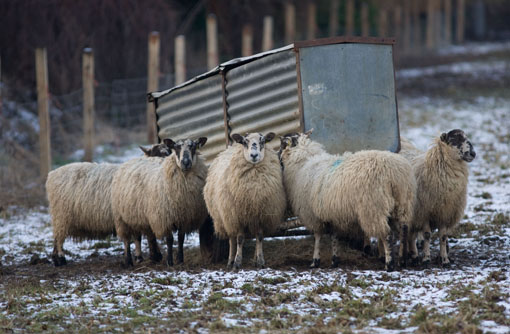Top tips when calculating a winter feed budget

Calculating a feed budget is vital after last year’s harsh weather to avoid shortages and having to buy more expensive feed in at the last minute.
Poppy Frater, EBLEX livestock scientist says feed budgets can be broken down in to the following steps:
1. How much feed is required?
a. How many cattle or sheep are there of different types (e.g. growing, finishing and breeding)?
b. What are the estimated intakes of the different feed components of the ration?
c. Multiply the amounts of feed required on a daily basis by the number of stock to be fed the same ration and the number of days over which it will be fed.
d. Repeat this for all classes of stock and add the totals of the same feed together.
For example: a 100 growing cattle (400kg lwt) may need 25kg fresh weight of silage and 2kg of concentrates a head a day for 180 days. Their silage requirement will be 100 x 25kg/1,000 = 2.5 tonnes per day x 180 days = 450 tonnes. Their concentrate requirement will be 100 x 2kg/1,000 = 0.2 tonnes per day x 180 days = 36 tonnes.
2. Supply
The requirement, calculated above, must then be compared to the feeds available on farm. For conserved forages, this requires measuring silage clamps and counting bales to estimate a total supply.
Ms Frater also suggests seeking advice from an independent nutritionist. “Analysing conserves forages will ensure the correct level and type of supplementation is fed to achieve optimum growth rates,” she says.
Keep up to date with all the latest livestock news
